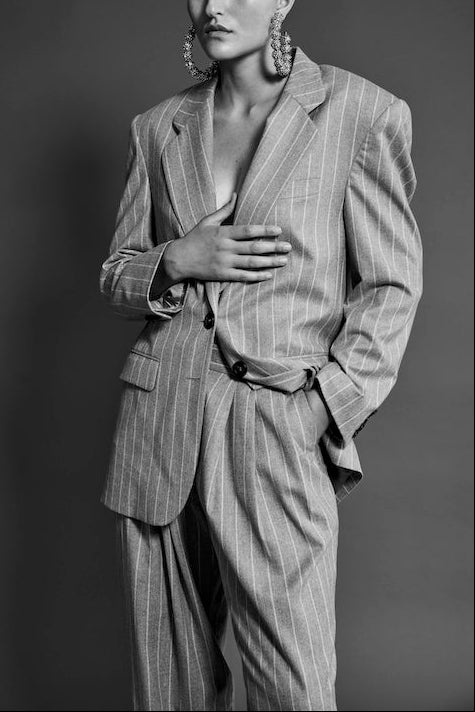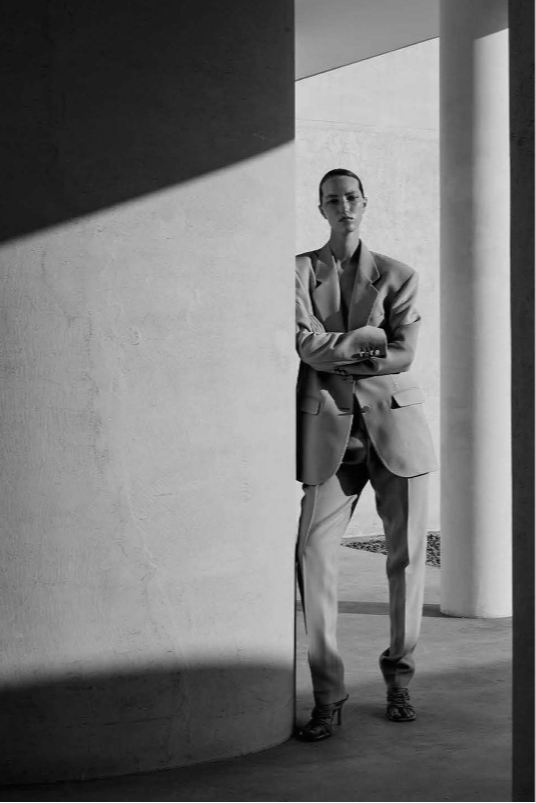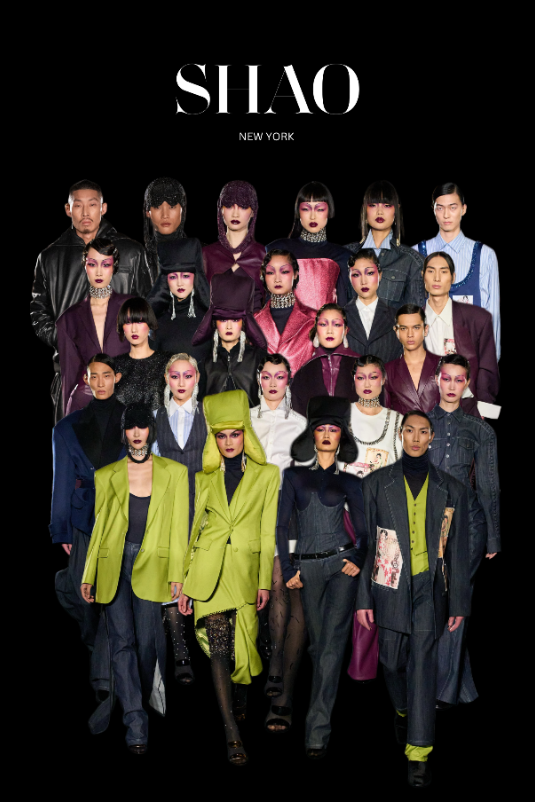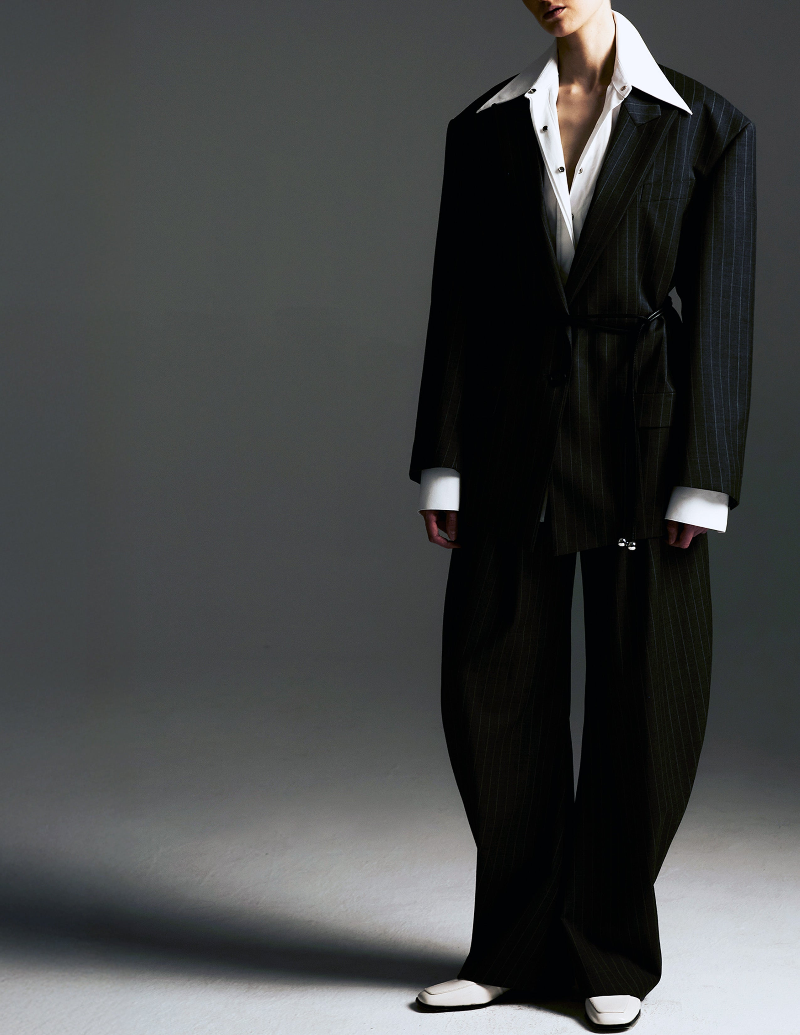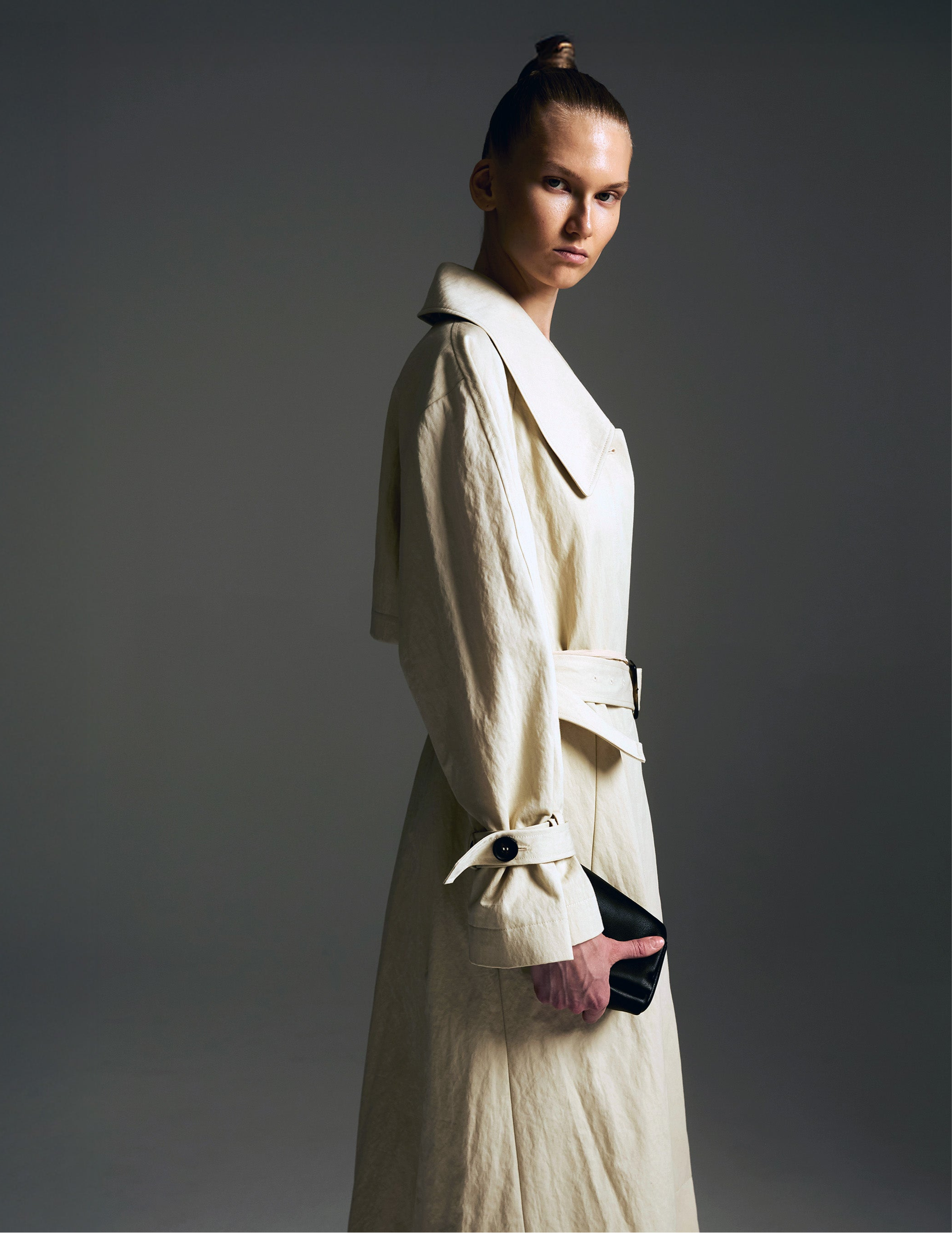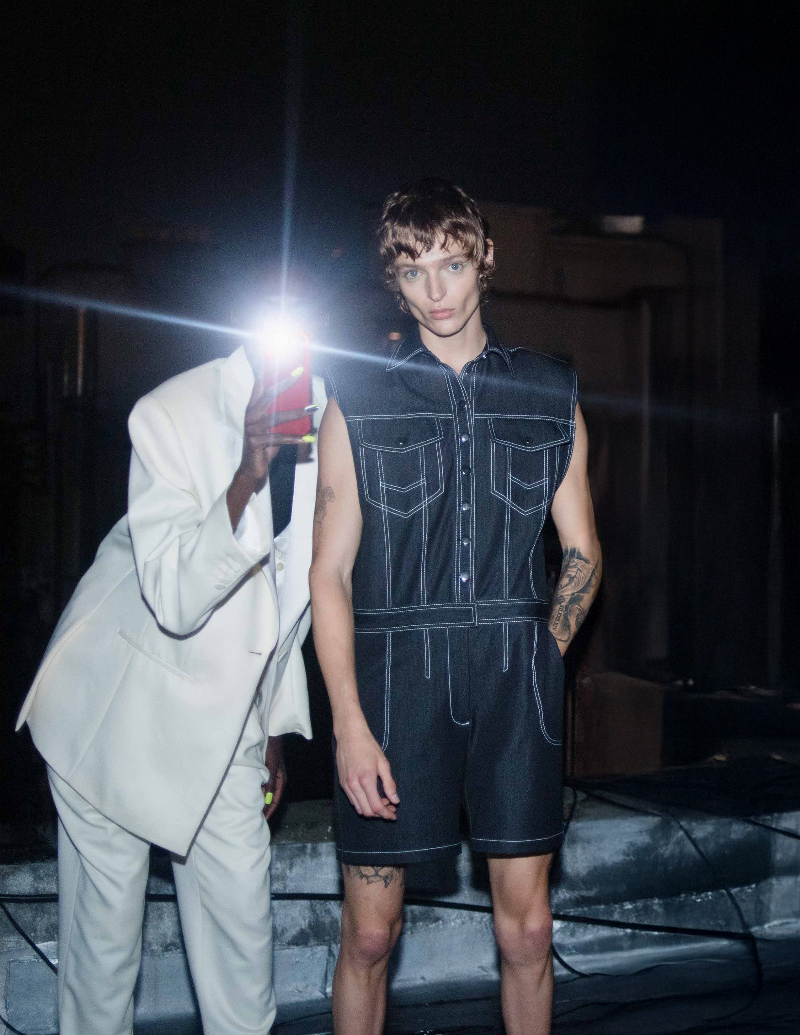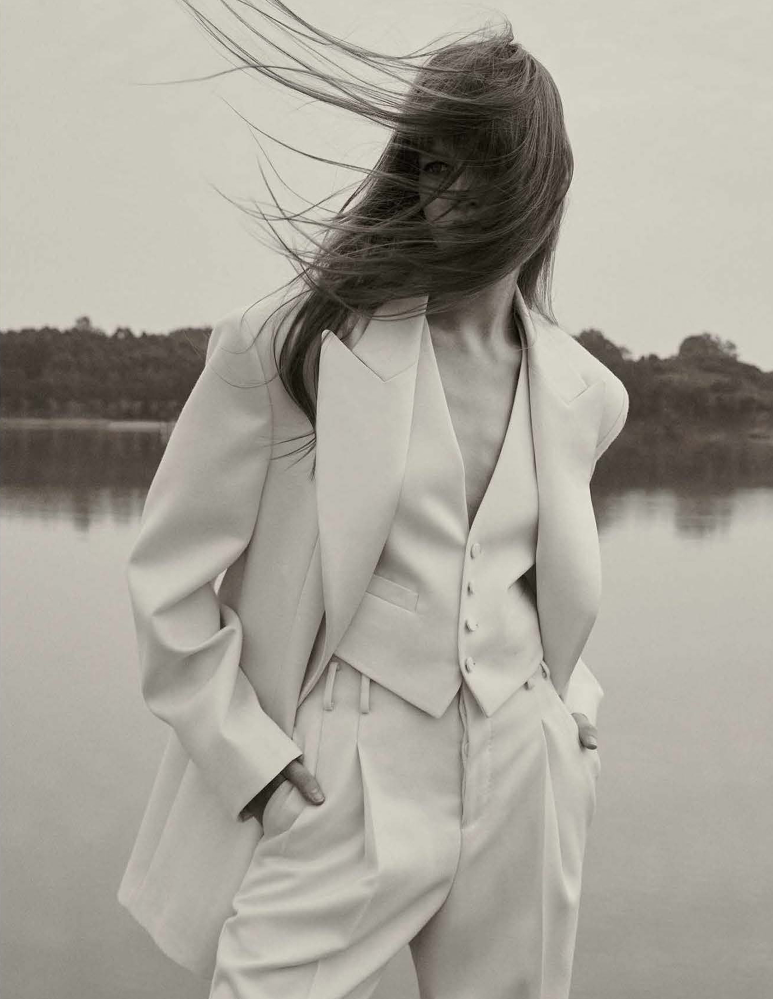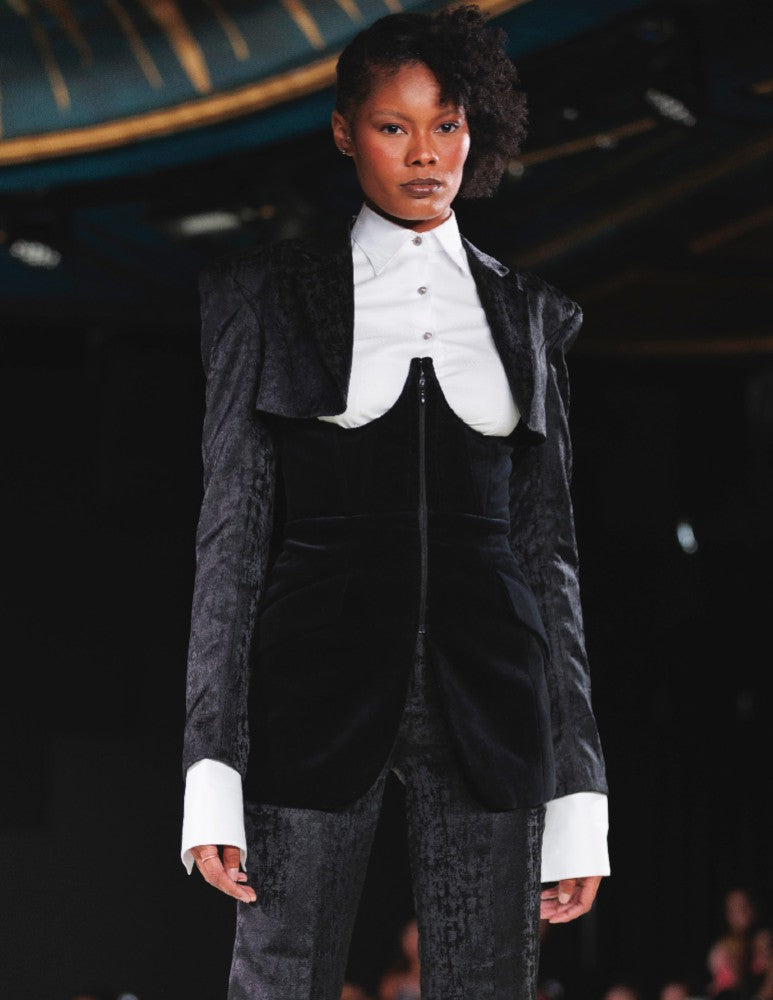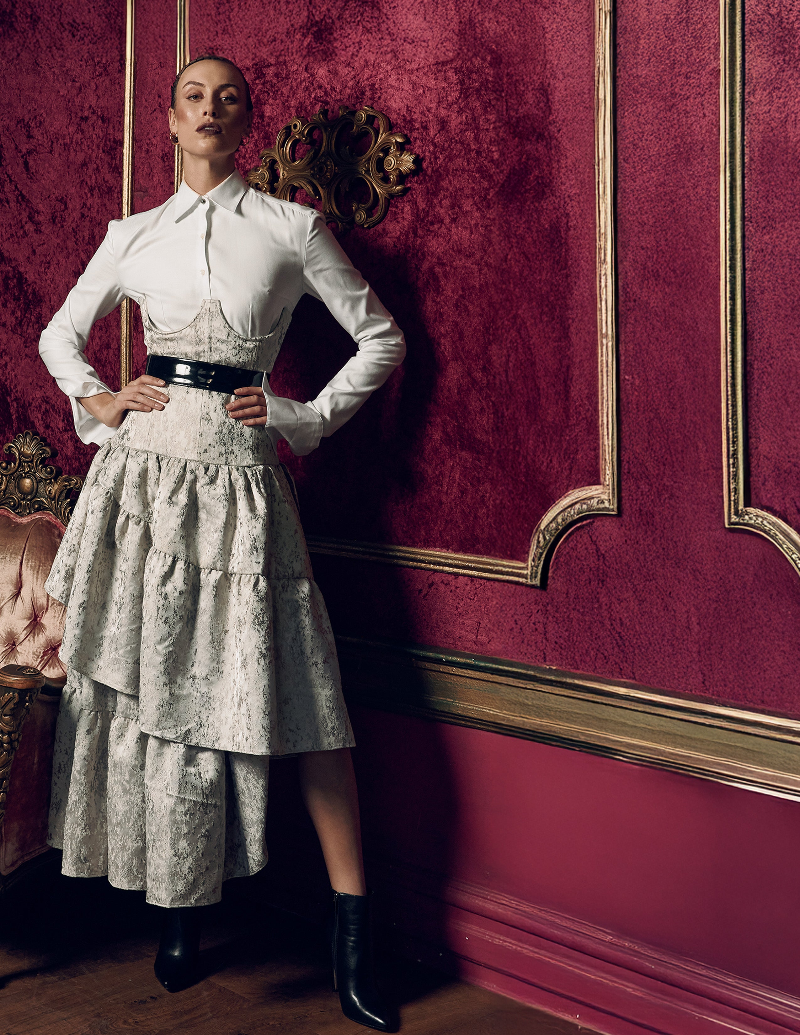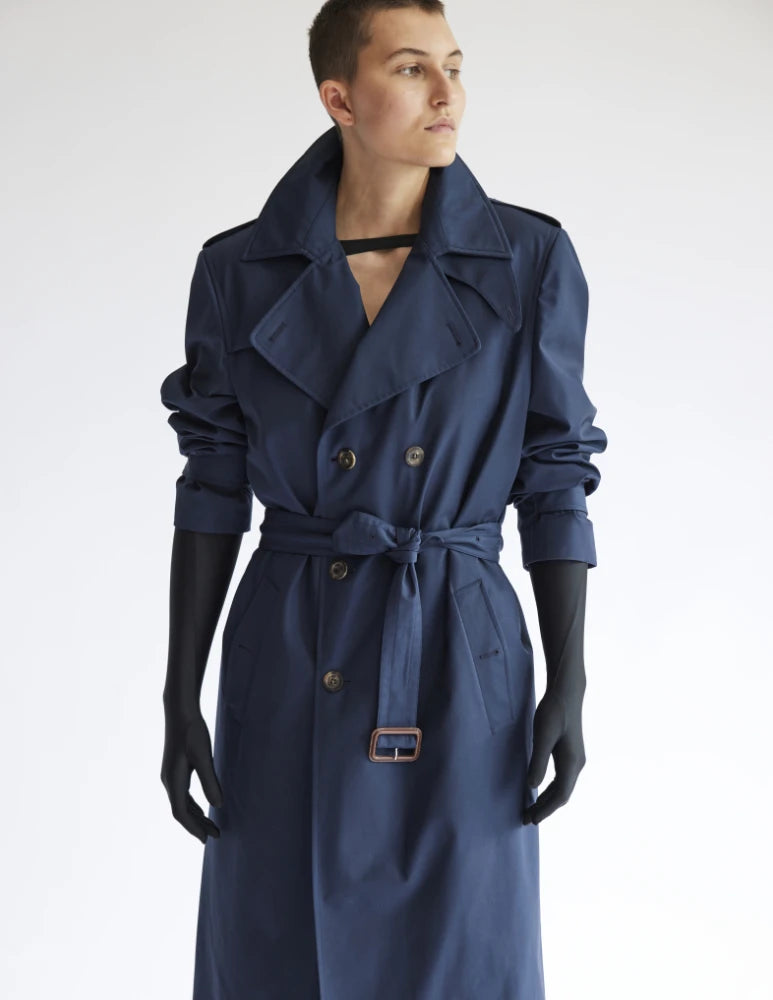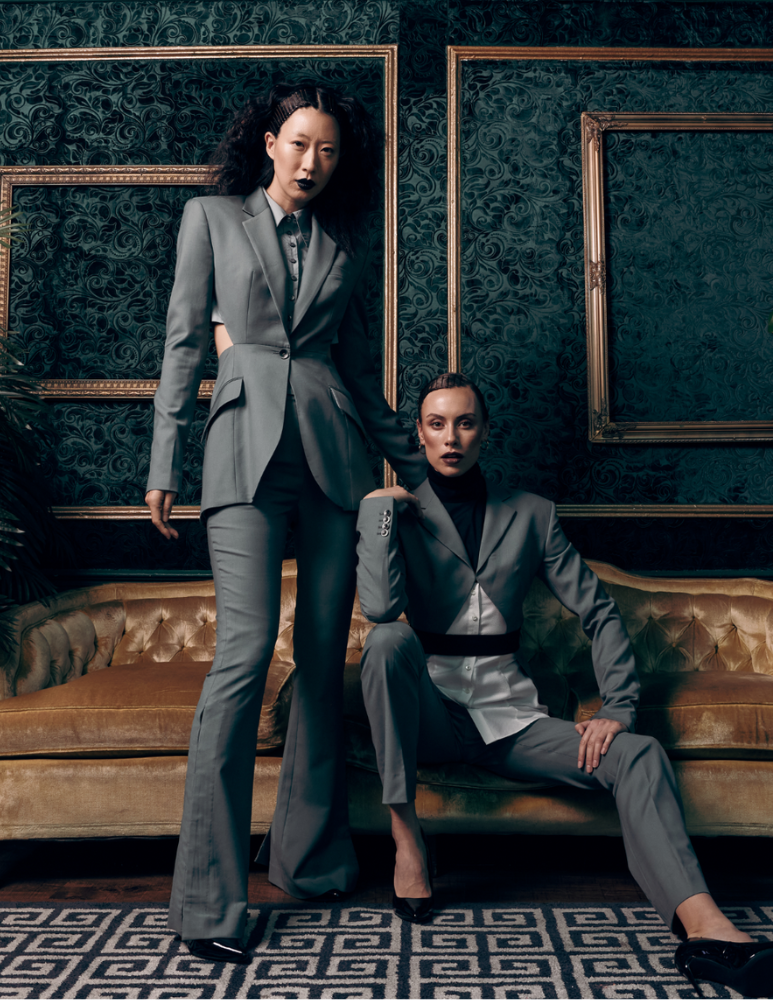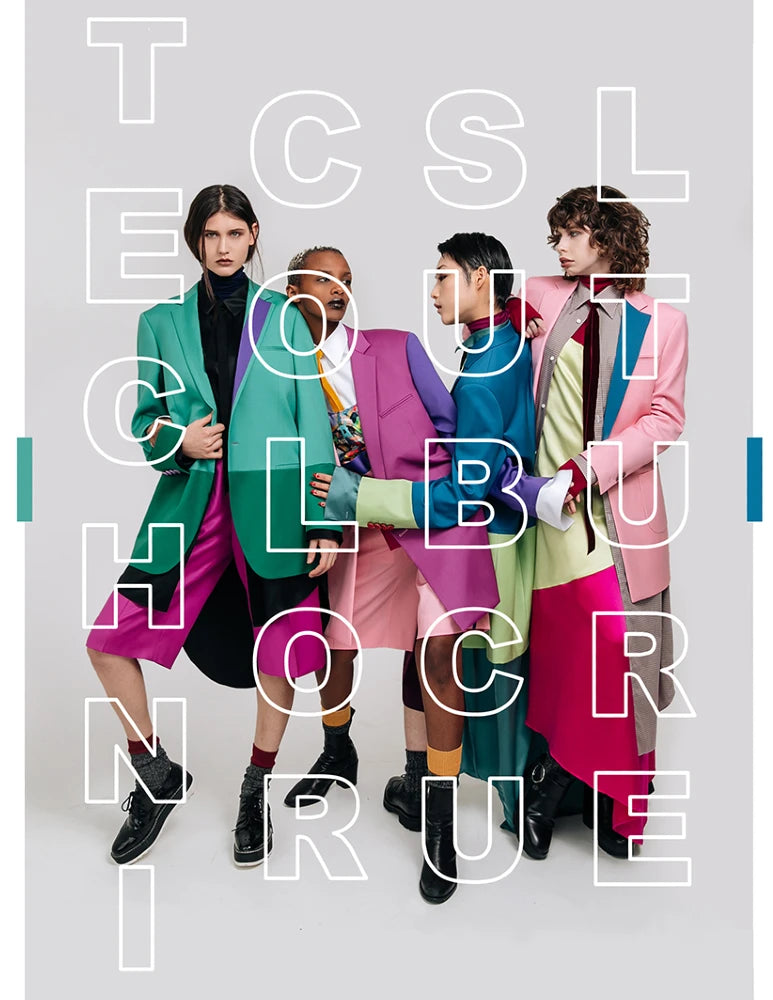The Architecture of Editorial Alchemy
Fashion editorials typically demand seasonal performance—trend-driven, easily categorizable, quickly digestible visual content. The Tailory's approach to editorial collaboration contradicts this artificial framework, much like the brand's refusal to separate technical innovation from transformative design. The recent feature in V Magazine, showcasing Taras Romanov in The Tailory's Gold Lamé Suit Set, documents this philosophical alignment between authentic luxury craftsmanship and editorial storytelling that transcends traditional fashion photography boundaries.
The collaboration reveals a brand that has discovered the profound difference between fashion performance and genuine material transformation. When The Tailory creates pieces that demand editorial attention through technical excellence rather than trend compliance, they're demonstrating the same evolution process that distinguishes authentic luxury from brands that appropriate metallic aesthetics without understanding their alchemical requirements.
V Magazine's selection of The Tailory for this editorial demonstrates sophisticated understanding of how authentic design philosophies translate through visual media. The featured suit doesn't compete with traditional editorial fashion or attempt to impose artificial contemporary requirements. Instead, the design's architectural proportions and metallic precision create frameworks that amplify editorial narrative while maintaining the craftsmanship standards necessary for genuine luxury recognition.
Cultural Navigation Through Metallic Memory
The gold lamé construction represents more than aesthetic choice—it embodies cultural dialogue between traditional luxury signifiers and contemporary identity expression. Romanov's interpretation of the suit transcends conventional modeling into performance territory, where material and movement create meaning that extends past visual impact into cultural commentary.
The editorial's success lies in its recognition that metallic materials carry historical weight within fashion vocabulary. Gold lamé achieved cultural significance during disco's liberation era, when it became uniform of nightclub rebellion and sexual expression. The Tailory's revival of this material represents reclamation rather than nostalgia—updating metallic glamour's radical potential for contemporary identity exploration.
Technical innovation within the suit's construction reflects broader industry shifts toward inclusivity through engineering excellence. The patterns accommodate diverse body types and movement requirements while maintaining the garment's sculptural integrity. This approach mirrors V Magazine's editorial evolution toward authentic cultural documentation rather than superficial trend coverage.
The Editorial Extension of Design Vision
The Tailory's journey into high-fashion editorial features reveals how authentic craftsmanship can extend rather than exploit cultural aesthetics. The brand's commitment to technical excellence while embracing transformative design demonstrates philosophical alignment with publications seeking substance over seasonal content.
V Magazine's editorial methodology integrates visual storytelling with cultural depth, paralleling The Tailory's approach to contemporary tailoring that honors traditional techniques while incorporating innovations for current identity expression. Both enterprises reject false binaries between heritage preservation and progressive design, creating synthesis that serves authentic human complexity rather than manufactured editorial demands.
This integration appears visually through the suit's hybrid construction. Traditional tailoring precision meets contemporary metallic materials, resulting in garments that achieve operational benefits of historical craftsmanship while accommodating modern performance requirements. The piece photographs dramatically while maintaining wearability—crucial considerations for designs intended to transition from editorial contexts to real-world application.
Performance Versus Authenticity in Visual Space
Romanov's interpretation of The Tailory suit demonstrates the difference between editorial performance and authentic material engagement. The model's commanding poses suggest confidence derived from garment construction rather than artificial editorial direction. This organic relationship between wearer and clothing reflects The Tailory's design philosophy of creating pieces that enhance rather than constrain authentic self-expression.
The editorial photography captures technical garment details while maintaining focus on transformative potential. Lighting emphasizes metallic texture and architectural construction quality without overwhelming the human subject. This balance requires understanding both fashion photography and material documentation—skills essential when featuring statement pieces that must serve editorial impact and authentic lifestyle application.
V Magazine's approach to styling demonstrates sophisticated understanding of how authentic design translates through editorial choices that support rather than overshadow natural material drama. The featured Tailory suit provides visual authority without competing with publication aesthetic or imposing artificial luxury requirements.
Technical Innovation Serving Transformative Truth
The construction innovations incorporated into the Gold Lamé Suit Set demonstrate how technical advancement can serve authentic transformation rather than imposing artificial editorial requirements. Traditional formal wear often creates compromise between visual impact and movement freedom. The Tailory's pattern development addresses these issues through architectural construction that maintains design integrity while accommodating performance demands.
Internal structure utilizes modified traditional tailoring techniques that provide dramatic silhouette without restriction. This approach proves particularly relevant for editorial work requiring both visual impact and authentic wearability. The suit functions as both cultural statement and technical achievement—providing confidence while allowing personality to emerge through authentic movement and gesture.
The metallic material selection requires sophisticated understanding of how gold lamé interacts with photography lighting, movement dynamics, and aging characteristics. The Tailory's construction ensures the fabric maintains its transformative power while serving practical garment functions across diverse wearing contexts.
Future-Facing Tradition in Design and Media
The V Magazine editorial reveals a publication that has learned to balance immediate visual impact with long-term cultural documentation. The magazine's approach to featuring The Tailory represents evolution from traditional brand promotion toward authentic design dialogue that serves educational rather than purely commercial purposes.
The Tailory's design philosophy operates through cultural time horizons, creating pieces intended to remain relevant across multiple trend cycles while incorporating innovations that improve with wear and styling. The Gold Lamé Suit Set represents this approach through classic proportions enhanced by contemporary construction methods that extend garment life while improving transformative potential.
This integration of heritage preservation and material innovation appears throughout The Tailory's collection, where traditional tailoring techniques meet contemporary fabric technology to create clothing that honors fashion history while serving present identity expression needs.
Conclusion: Transformation as Technical Achievement
The collaboration between Taras Romanov, The Tailory, and V Magazine ultimately demonstrates how authentic transformation requires technical sophistication to achieve lasting cultural impact. The editorial's success stems from alignment between model interpretation, garment construction, and publication vision—creating visual narrative that enhances rather than diminishes each component's authentic contribution.
This synthesis of performance, craftsmanship, and editorial excellence provides a model for contemporary fashion media that transcends traditional promotional categorization. The Tailory's ability to maintain technical precision while embracing transformative design parallels successful fashion collaborations that honor heritage while embracing innovation serving cultural dialogue rather than trend exploitation.
The V Magazine feature documents a moment when fashion, identity, and media converge around shared values of authenticity, technical excellence, and transformative potential. Whether this represents temporary alignment or sustainable direction depends on the industry's willingness to prioritize long-term cultural impact over short-term commercial exploitation.
Romanov's interpretation of The Tailory suit demonstrates that authentic transformation requires technical competence, material understanding, and cultural courage rather than mere editorial opportunism. The Gold Lamé Suit Set provides visual evidence of how the right design approach can support authentic expression while maintaining professional authority—fashion as tool for genuine transformation rather than costume for performed editorial identity.
As The Tailory continues expanding editorial recognition while maintaining craftsmanship standards and cultural authenticity, the brand's approach provides a blueprint for authentic design development that serves transformative truth rather than trend demands. The fashion industry's future likely depends on similar integrations of technical vision with cultural responsibility and material innovation that honors heritage while embracing contemporary transformative possibility.

